The City of Hong Kong's Manual Sweeping Program
by Ranger Kidwell-Ross
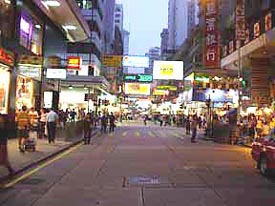 |
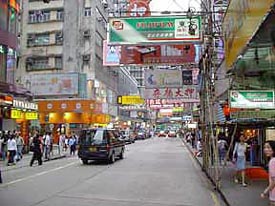 |
It's not just the thoroughfares of Hong Kong that are clean. By far, more actual surface area is swept by workers using brooms than is cleaned via the way U.S. readers will think of as traditional, which is through the use of mechanized power sweepers. All of the streets of Hong Kong, as well as sidewalks and other paved surfaces where litter collects, are kept pretty much spotless by a corps of sweeping personnel that handle the task with brooms and plastic containers.
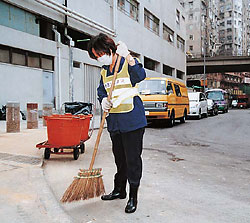
As you might guess, this Herculean task requires a substantial amount of manpower. Since the Hong Kong Food and Environmental Hygiene Department is an equal opportunity employer, there's actually an equal chance you'll see a woman at the task. And, with 2,300 workers on the job each day, all wearing a distinctive blue outfit with a reflective vest, the manual sweeping workers are easy to spot.
Applicants for the job have to pass some simple physical tests. For example, before they can be considered for hiring, each worker must demonstrate that s/he can pick up two 25-kilogram loads and carry it for a distance of 10 meters. Once hired, the sweepers are issued a hand cart, broom, and plastic containers to put the litter into prior to bagging. Their uniform of dark navy blue pants and shirt, safety reflective vest, and shoes is also provided as part of the job.
|
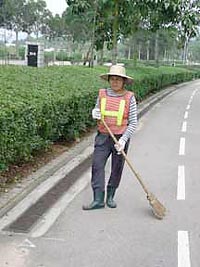
|
Just like mechanized sweeper operators, the manual street sweepers are hired on as government servants. Because theirs isn't as specialized a job as running a power sweeper, however, they only earn a wage of about $9,000 HK per month (instead of an average of $14,000 HK), plus their medical coverage, and annual leave.
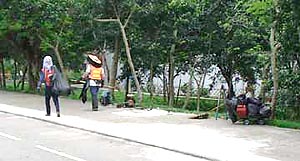
|
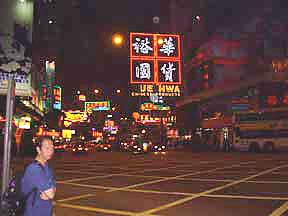
|
Manual sweeping is done both day and night, although there are more workers on the day shift. Combined, there are a total of 3,570 separate 'beats' -- 2,252 beats swept by the departmental workers, and the rest by the contractors. At the start of their shift, each employee is provided with a planning sheet that shows the daily program, or area to cover, for their 'cleansing beat.' Then, they walk to the work area specified for their shift.
|
|
In some of the high-density tourist areas, designated streets and sidewalks are scheduled to be swept up to 6 times per day. And, the first round is finished before most of the tourists get out of bed. The street in front of my hotel, for example, is assigned ample workers so that it's swept completely between the 7 AM day shift start time and 9 AM.
Typically, collected debris is loaded initially into the refuse hand carts. Either as they go along or periodically, the waste material is deposited into black garbage bags for ease of handling until it may be disposed of properly. As with the mechanized power sweeping of Hong Kong, a portion of manual sweeping is now being contracted out. To date, some 30% is being outsourced to contractors, with an eventual goal of increasing the amount to about 50%.
Like Hong Kong itself, the pavement cleaning services provided through the auspices of the Hong Kong Food and Environmental Hygiene Department is a unique and varied mix of old and new. Manual and mechanized, state-run and contracted; the combinations underscore the changes China is undergoing as it forges ahead into the 21st century.
We also have a companion story to this one online that discusses Hong Kong's mechanical sweeper program.
This story was one written during our editor's trip to Asia in 2001 to investigate sweeping. While he was there, Ranger wrote an online journal for the sweeping industry. You may still view this online journal, which won a U.S. APEX Award for Online Journalism, in our archives.
|
|

